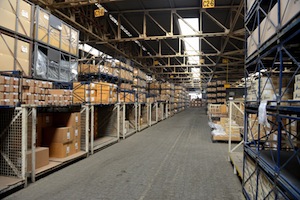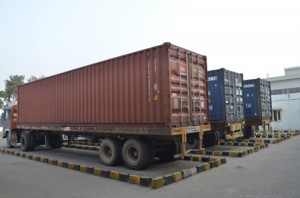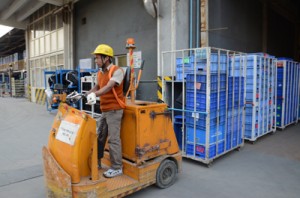Maruti Suzuki on raising the Indian supply chain
Competition can do wonders for a business. When rivals outdo a company, it is often forced to explore possibilities that were previously unknown to it. This is something Sudam Maitra, former senior managing executive officer for supply chain at Maruti Suzuki, realised early in a purchasing career that has spanned three decades

Sudam Maitra has worked to develop the Indian supply base for much of his career. Maruti Suzuki and its top supply chain executive are spreading expertise and efficiency across the sub-tier chain
In this story…
- Supply chain history lesson
- Global product revolution
- Redefining local supplies
- A partnership approach
- Looking to tier twos and threes
- Digesting milkruns
- Improvements at JBM
Other stories in this section:
Competition can do wonders for a business. When rivals outdo a company, it is often forced to explore possibilities that were previously unknown to it. This is something Sudam Maitra, senior managing executive officer for supply chain at Maruti Suzuki, realised early in a purchasing career that has spanned three decades.
Had there been no competition, the soft spoken, meticulous mechanical engineer would have possibly moved slowly on creating new paradigms in procurement and supply chain at India’s largest carmaker. Instead, he has been at the centre of a transformation that has not only allowed Maruti to prosper by working with efficient, reliable material suppliers and logistics providers, but his work has also contributed to the development of the entire country’s automotive supply base.
From monopoly to competitive supply chains
Until Suzuki entered India in the early 1980s – then in partnership with the Indian government as Maruti Udyog – the motor industry’s supply base in India was extremely limited, serving only Hindustan Motors and Premier Automobiles. Maitra recalls how the carmaker had to learn many lessons to arrive at the generally well functioning, lean and thriving supply chain we find today in India.
During its first decade, Maruti faced limited competition and hence paid less attention to the vendor base it had created to cater to its needs, or to rising costs. “Vendors used to come to us at the end of the year and seek price hikes for their supplies, citing increases in input cost,” Maitra says. “We invariably bowed to their demands because we enjoyed a monopoly situation and managed to hike our prices consequently.”
“Once we arrived at the vehicle’s market price, we fixed material costs. Vendors were shocked initially. We told them, ‘enough of this upward price revision every year” - SudamMaitra, Maruti Suzuki
That situation changed dramatically once competition increased and more carmakers entered the market. Quality products had to hit the dealers at prices lower than those of the competition, and achieving this cost began in purchasing, says Maitra. Maruti switched its procurement approach to ‘target costing’.
“It is sort of a reverse calculation,” says Maitra. “Once we arrived at the vehicle’s market price, we fixed material costs. Vendors were shocked initially. We told them, ‘enough of this upward price revision every year. Now you need to look at downward price revision every year’.”

Suppliers met this change with stiff resistance, including walkouts. Sensing the challenge, Maruti Suzuki’s executives eventually realised that to achieve deep cost reduction year on year, the company would need to work together more with suppliers. “Unless this is carried out, we cannot bargain with them to reduce the cost when their final product is ready for delivery,” Maitra says. “It was then that we in purchasing truly realised that it is a chain. So we also changed the name from ‘purchasing and vendor development’ to ‘supply chain’.”
Global expertise for global products
This shift would become even more important as Maruti Suzuki built more global vehicles, the production and launch of which coincided with those in other markets. Supply chain complexity and coordination became even more complex. “Before 2005, [managers] would go to Japan where all Suzuki models would be lined up and they would identify one or two models that may suit Indian conditions and then bring them here,” he says. “Since Suzuki had taken a majority control in Maruti Suzuki around that time, it was decided that henceforth all launches from its stable would be global ones. For instance, Swift was launched simultaneously in Japan, Hungary, China and India.”
That shift has had huge implications for the supply chain. “Earlier, we used to bring designs from Japan and pass them on to vendors to copycat them,” Maitra explains. “Since 2005, things have changed due to this simultaneous global launch phenomena. Here, the challenge was to ensure Indian suppliers’ input on design should also be incorporated in the final design. This led to the concept of ‘concurrent engineering’. In a way, we were moving towards collaborative modules with our suppliers, which again was a paradigm change. Many vendors were unable to rise up to that level.”
It was around this time that supplier development started to become even more important for the supply chain team at Maruti, both in establishing global suppliers in India, as well as nurturing smaller, local suppliers.
Generally, Maruti Suzuki defines three categories of suppliers: fully owned, global suppliers (such as Visteon and Delphi, as well as logistics providers like NYK/Yusen); the second is large Indian companies that went in for joint ventures with foreign companies (such as Sona Koyo, Krishna Maruti, etc.); the third lot is small Indian suppliers, such as for sheet metal or plastic components, that operate with no foreign equity or technological collaboration.
When Maruti switched to global launches, it was the third category that was largely unable to participate in the ‘concurrent engineering’ route, according to Maitra. He says that they were good at reading drawings and manufacturing them, but many lacked design skills.
To remedy this situation, Maruti set up a separate division within Maitra’s supply chain wing to identify foreign technology firms and match them with Indian suppliers. Maruti advised the third category of suppliers to get into tool design with these companies, which is generally considered easier than product design. This matchmaking exercise began in 2006 and has so far led to 18 collaborations.

Not all of them have lasted. Some foreign partners, having tasted the Indian automotive market through collaboration with local companies, wanted to then set up wholly owned subsidiaries. “There is some amount of heartburn from the Indian companies but the positive factor is that they have already imbibed or learned design capabilities,” says Maitra.
Today, the supply base in India has blossomed. Maitra works with more than 400 vendors, including global, Indian and joint venture suppliers. He says that such a variety of choice is important because of uncertainties in logistics, labour and infrastructure in India. For example, Maruti Suzuki will often have three suppliers for some parts. “We just cannot afford to depend on one or two,” he says. “In India you are not sure of many things: work stoppages at factories, highway and transportation challenges or port challenges, for example. The availability or access to more suppliers is a blessing.”
Maitra and his team remain highly focused on supplier development today, including helping vendors to improve lean manufacturing and just-in-time logistics. “Our aim is to help them to achieve manufacturing at absolutely minimum cost. Productivity at its highest and the best quality.”
Suppliers are grouped into clusters and taught ‘pull’ and ‘just-in-time’ manufacturing in classrooms for a fortnight. Following this, projects at vendor locations are taken up for identifying where there is maximum pain: high inventory, low productivity and high manpower, for example. Maruti experts then work with suppliers for six months to help them improve further.
The company has even set up a special unit to work closely with suppliers. The Maruti Centre for Excellence (MACE) is made up of a group of engineers that focus on supplier quality, including periodic audits and consulting on project implementation.
The path to localisation
Maitra’s mantra for purchasing is simple: localise and keep the cost as low as possible. Do anything and everything legally possible to achieve that goal. As well as dealing directly with suppliers, Maitra has also done hedging in foreign currency for Maruti, as well as for commodities such as copper, aluminium, platinum and palladium – a first in the Indian automotive industry.
Localisation of suppliers and components has been an important part of Maruti Suzuki’s supply chain development over the past decade or more, not least to avoid exposure to currency shifts and higher logistics costs. This process started with a redefinition of what ‘local’ meant. In the past, the carmaker followed criteria for supplier localisation from India’s Directorate General of Trade and Development (DGTD). These rules state that if a part is invoiced on Indian soil, it is considered ‘local’, even if most production happened abroad and the product was sequenced and packaged in an Indian warehouse. This was the case with much of Maruti Suzuki’s own production, as well as those of the suppliers that came over from Japan and other locations.
“Even if a ‘child’ part comes from overseas, it will not be considered as ‘local’. As per our present definition, localisation is around 80-85%” - Sudam Maitra, Maruti Suzuki
The result was a distorted picture for localisation of the Indian supply base. According to the DGTD definition, Maruti Suzuki already had a localisation rate of 99% in 1996. However, the invoicing loophole could not hide risks from foreign currency exposure and other supply chain costs, which were taking their toll on the carmaker’s global procurement bill.
“Our understanding was that if there were any foreign exchange variations, Maruti Suzuki would compensate for them,” says Maitra. “But as the Japanese yen got stronger, leading to higher outgoings for imports, it caused a big dent in our profitability.”
Maruti has since changed its definition for local suppliers. “Even if a ‘child’ part comes from overseas, it will not be considered as ‘local’. As per our present definition, localisation is around 80-85%.”

For operations and design, Maitra and his team have also targeted reductions in weight. “We have a strategy called 1-1-1 on the raw material side, which is the brainchild of our chairman, Osamu Suzuki,” he says. “The goal is to reduce the weight of every component by one gram. Costing is based on weight, so every single gram of weight reduction is a positive.” According to Maitra this has led to Rs120m ($1.9m) in savings each year.
Partnering with suppliers
A relentless focus on cost masks Maitra’s commitment to partnership in the supply chain. While he wants to keep costs low, he is not looking to beat up on suppliers. “If we keep squeezing suppliers in protecting our interest only, then in the long run we cannot sustain,” he says.
Maitra has implemented measures designed to help suppliers. Recently, India’s central bank gave Maruti permission to hedge currency on behalf of Indian suppliers. The carmaker also buys raw material for suppliers in bulk to help companies get a better price; it arranges low-cost funding for suppliers. For a small fee, payments are also fast-tracked, with just a nine-day cycle from the date of invoice submission.
Maitra admits that suppliers unable to meet cost targets will struggle. However, he recognises that it cannot be all pain and no gain. Maruti has introduced shared savings programmes with suppliers, called ‘value analysis value engineering’. “If suppliers are going for localisation of child parts instead of importing, for example, we will share the savings,” says Maitra.
Maitra is proud of Maruti’s vendor relationships, something his tier suppliers have backed up. Anand Swaroop, president and group chief financial officer of Indian tier supplier JBM Group Limited, which has a joint venture with Maruti Suzuki, says that “it is not a buyer-seller relationship, but a partnership”. (See box below.)
Swaroop points to areas such as help with raw material procurement and assitance with bank financing as important support mechanisms from Maruti. “Having learnt this proactive approach, we try to replicate this with our vendors too,” he says.

Improving inventory through the tiers
Logistics has played a particularly important role in keeping overall supply chain costs as low as possible, particularly in reducing inventory, says Maitra. He recounts how by tightening its material quota, Maruti was able to lower inventory across the supply chain.
“We used to give suppliers a month’s schedule of our material requirement,” he says. “Because of our nine-day payment cycle, they would finish their quota in 21 days. As a materials person, I would invariably enter the plant via the materials gate. When I wouldn’t see any trucks at the gate towards the month end, I used to get panicky, wondering if I would soon be getting calls from the lines saying some materials had not arrived. However, we realised that suppliers produce more and our inventory levels were going up, too.”
In response, Maruti Suzuki lowered its material quota from a month to 15 days. Inventory levels inside the plant fell by a whopping 70%. “Now we are advising our tier one suppliers to implement a similar system with their own suppliers so that the chain becomes lean at that level too,” Maitra says. He adds that he would also like to implement more JIT processes among tier two and three suppliers.
Maitra says that his team is constantly pursuing logistics improvements, including studying new routes and trade options. Currently, about 80% of imported material arrives through the congested Jawaharlal Nehru Port Trust (JNPT) in Mumbai. The rest, including steel coils imported from Japan and South Korea, arrive via Kandla and Mundra in Gujarat. Maitra says that Maruti Suzuki is exploring the port of Pipavav on the Gujarat coast, which could eventually tie up with the proposed Maruti Suzuki plant in the state.
One important improvement came when Maitra convinced Suzuki in Japan and its shipping lines to dock at Indian ports once a week instead of monthly. Earlier, the same ship carried materials for Suzuki in India and in Pakistan. But because of poor relations between the two nations, the Suzuki Pakistan consignment was unloaded in Singapore for transhipment directly to Pakistan. This delayed the India consignment for at least four days since it had to go to Indonesia to get the ship loaded to its full capacity.
“We told Suzuki that the relationship between Suzuki Pakistan and Suzuki India is excellent and there is no need for segregation at Singapore. Now the practice has been stopped and we saved at least four days in voyage time,” he says. “The ship from Japan stops at JNPT and then goes to Karachi.”
“Toyota has gone in for the total 3PL route. We decided to get into these modern concepts too” - Sudam Maitra, Maruti Suzuki
The company is also tackling waste reduction. Steel coils arrive in trucks from the port, which had always returned empty. Similarly, containers carry cars by rail to Mundra for export and return empty. Now, Maitra and his team have arranged that the containers carrying cars can bring back coils to the plant. It’s such a successful change that Maruti workers have rechristened the containers as ‘coil-tainers’.
Trying a pint or two of milkruns

Maruti Suzuki spends about 2.5% of net sales on inbound logistics, as it relies mainly on vendor-managed inventory. Maitra admits that milkrun processes had previously been indigestible for him. However, the company has moved more towards using 3PLs to manage parts of inbound logistics. “Toyota has gone in for the total 3PL route. We decided to get into these modern concepts too,” he says. “But our experience has been that when the vendor manages his supply, the cost is lowest when compared to the 3PL route.”
The carmaker has experimented with milkruns from Faridabad, close to Gurgaon, with Ceva. Maitra says all suppliers can track supplier movement on a handset. Now he is deliberating whether to introduce milkruns at other locations, including Bawal, Rohtak and Manesar.
“We want to keep a mix of VMI and 3PL-managed inbound operations,” he adds. “If we do not do it at all, how will we know which is the best?”
JBM Group is an Indian tier supplier that has seen turnover rise to Rs1,200 crore ($192m), including a large joint venture with Maruti Suzuki. Anand Swaroop, president and group CFO, has been with the company from the beginning.
“Maruti Suzuki is a vendor-friendly company. Ours is not a saas-bahu [mother-in-law and daughter in-law] relationship. They work with vendors and don’t thrust and impose their dictats. They treat you like partners and bring you up. They are there at every single step giving you support in terms of quality, production facility and logistics. Without this relationship, we would have remained just a supplier of seat components. Today we are a systems supplier.
Localisation is the focus. It is not just a cost reduction approach, but an excellent learning opportunity. Waste reduction is achieved through joint efforts and benefits realised thanks to a transparent and collaborative relationship. Regular meetings at every level – right from CEOs to the shopfloor level – give you confidence and better future prospects.

We no longer talk of ‘rejections’ at JBM. Terms such as lean manufacturing, supply chain and zero defect are very common and familiar to us. At one point, we had 2,000 PPM. Today, it is 5-10 PPM. We are trying to replicate what we have learned with our 40-odd vendors via clusters. We can claim that we noticed a 60% improvement in the performance of our vendors after MACE conducted training and upgradation of skills.
MACE will not leave you until you reach the right level of perfection. It is a never-ending exercise. We have no complaints.”





